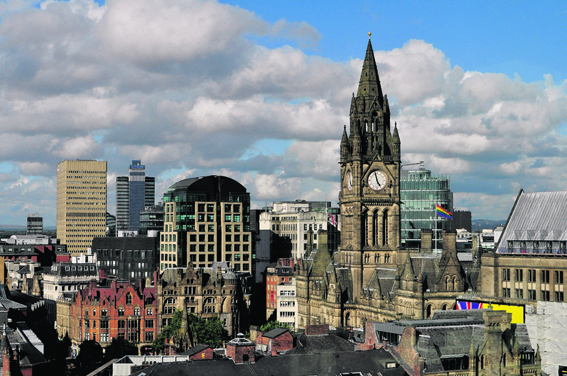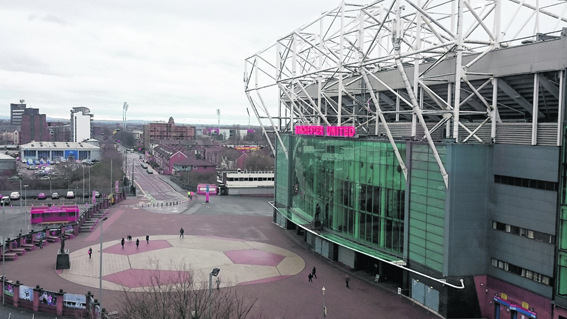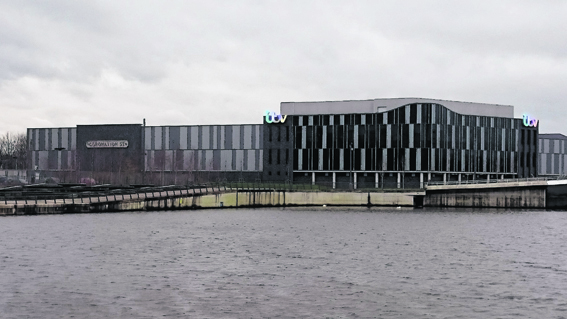Manchester has far more to offer than just popular culture. As one of the UK’s biggest cities, it has its own story to tell and real efforts are being made to showcase exactly what is on offer – and why it has been named one of the top 10 cities to visit this year by travel experts Lonely Planet.
Just an hour’s flight from Aberdeen, Manchester is an easy choice for a short break and, with the airport being a major hub for passengers travelling internationally, getting to and from the city centre is straightforward – maximising the time for exploring and soaking up the atmosphere.
For our two-night stay we were booked into Hotel Football, right on the doorstep of Old Trafford. The £24million, 133-bedroom hotel opened last March, and is owned by former Manchester United players Gary and Phil Neville, Ryan Giggs, Paul Scholes and Nicky Butt.
The four-star venue features subtle references to football throughout, ranging from wallpaper in the style of football stickers; a history of the balls used since the first World Cup in Uruguay in 1930 to 2014’s in Brazil; and even football shirt-shaped bottles of toiletries in the bedrooms.
The decor in the rooms all have a nod to the game too, but for us, the real score was the view from the huge window – right on to the stadium, and the statue of the Holy Trinity – George Best, Denis Law and Bobby Charlton. Throughout the weekend, fans gathered outside for snaps, but even from five floors up, we got a unique view and picture opportunity.
But if that’s not quite enough for the diehard fans, how about a game on the rooftop of the hotel overlooking the theatre of dreams? With a retractable roof and walls made of safety glass, the Heaven football pitch gives guests the chance to play in an unforgettable surrounding while enjoying panoramic views of the stadium and the city skyline.
The hotel also boasts a bustling restaurant – Cafe Football – function suites and a basement bar for fans.
And although there is no denying the hotel is in a tremendous location for Old Trafford, those more interested in exploring Manchester’s other attractions should not be put off.
Just a short walk away is The Quays, a culturally rich area of the city. Once at the heart of the city’s economy and industry, Salford Quays is now home to MediaCity UK, where the BBC moved to in 2011, but also has something to offer art lovers, theatre goers, shoppers and history buffs. And for those hoping to catch a glimpse of their favourite soap star, the Coronation Street studio is just on the other side of the water.
One of the first things we come across as we stroll along the waterside is a heritage trail, featuring five distinctive sculptures. The project was designed to tell the history of the Salford Quays, using stories told by those who know it best – former workers and residents still in the area today.
The sculptures vary dramatically along the two-mile trail. Casuals, by Broadbent, is made up of several metal structures which represent a dock worker’s union card; while further along the route, Where the Wild Things Are – a group of tall green and silver reeds – celebrates the impact of the Manchester Ship Canal on the UK’s ability to import goods such as bananas, cotton and tea.
The sculpture that caught my attention the most, however, was Nine Dock. The large number nine is engraved with quotes from workers and residents of the dock, which was once the largest and most important, and ensured the port could compete internationally. They share their memories about living around the bustling dock, while one woman recalled her father, as a young boy, coming across a man sketching the goings-on and being shooed away.
That man turned out to be LS Lowry, who became famed for his painted scenes of life in industrial parts of north-west England. The world’s largest collection of his work is on permanent display in the Lowry Gallery on the quay, and as we wander through we stop to admire the range of street scenes, town scapes and paintings of stormy seas.
The gallery is within a larger complex on the quayside, which includes a modern, 1,730-capacity theatre that boasts a packed programme for the year, offering drama, opera, ballet and plenty for the kids too.

After a quick look in the adjacent shopping centre, we head to the Imperial War Museum North – a striking building that grabs your attention as soon as you arrive at the quay.
Designed by renowned architect Daniel Libeskind – who went on to create the plans for rebuilding Ground Zero in New York – the steel-clad building is made up of three interlocking shards and is meant to represent a globe shattered by conflict.
Inside, we discover a world-class museum, featuring more than 1,400 objects that help tell the stories of people affected by war. The huge exhibition area covers from World War I through to present-day conflicts, and has plenty of interactive displays.
We spent hours wandering around, admiring the imaginative way the curators have brought the conflicts to life. There are also regular talks and presentations throughout the day, and award-winning big picture shows. During these, the lights fade to make way for giant screens that immerse visitors in the heart of the story, using photography and art from the IWM North’s vast collection.
For visitors tight on time, the team has come up with a handy list of ‘must see’ displays – including the revolver carried by Lord of the Rings author JRR Tolkien during the Battle of the Somme, the field gun that fired the first British shell of WWI and a huge section of steel recovered from the World Trade Center after 9/11. Standing in front of that 22ft piece of mangled metal, pausing to think about the 3,000 killed in the attack, was a poignant way to end our tour.
After one last stop for the obligatory photograph at Coronation Street, we head for home. With the bustling restaurant loud with chatter and laughter, the atmosphere cosy and welcoming, I can only imagine what it would be like on match day. Perhaps I better go back next season, just to be sure.
TRAVEL FACTS
Flybe operates six flights to Manchester from Aberdeen on weekdays, with five on Saturdays and three on Sundays.
From Inverness, there are three weekday flights and two at the weekends.
It takes about half an hour to get into the city centre by car, but the airport is also serviced by regular trains and trams to Manchester Piccadilly.
Hotel Football is just under three miles from Piccadilly train station, or a 20-minute taxi ride from the airport.
Rooms start from £89 per night based on two adults sharing. Visit www.hotelfootball.com or phone 0161 751 0430 for more information.

